Last weekend, 28-29 September, was due to be a wash-out, weather-wise, with ‘two blob’ rain forecast for both days1. I didn’t have much hope of making progress on the allotment, and the planned pruning of fruit trees looked firmly off the agenda for this year.
But just as I was resigning myself to the disappointment of a plot job not done, the sun came out and Saturday became what may turn out to be The Last Blue Day of 2024’s rather rubbish summer.
This week’s Plot Shot
Saturday was such a welcome sunny day, I kept wanting to capture the lofty blue sky as we worked under the fruit trees.
I’ll keep looking at this beautiful blue through the dark, cold days of winter.
Plot work in progress
The work under the trees was to tackle what should be an annual prune of the greengage and damson trees. Both have fruited well this year, and their produce is already in good jam, but the trees have not been pruned for several years and are both bent out of shape. Plus, we had to try out the new hand-held battery chain saw.
My friend Colin was itching to start work as soon as I arrived on site, saying that the dry and warm sunny day was just too good to waste, and that we were going to Get On With It immediately. We did.
The chainsaw made short work of the job, and we probably did in forty minutes what would have taken us three or four hours with just loppers and a bow saw. We laughed a lot - it was like having a new toy at Christmas but with fully-charged batteries.
Harvesting now
The apple tsunami continued2, and horrible blight has arrived on other plots’ tomato plants at the top of the site, although thankfully nowhere near ours. I picked about another half kilo of small mixed red tomatoes3 to take home.
What I didn’t pick as they are mostly still rock hard are the ‘Black Moon’. These are so dark, almost black, that they are taking their time to ripen. More sun over the last few weeks would have helped.
These ‘Black Moon’ are even darker than the “Indigo Rose Cherry’ we harvested a few weeks ago. They are smaller, round rather than plum-shaped, and they start off black at the top, and pale green at the bottom. Gradually, the black spreads down the fruit until they are uniformly dark. We aren’t quite there yet, but these are beautiful.
Making and eating
Back home with the produce, husband Clive was confronted by yet more apples to process, and went for another shot at our ‘Dishoom-ish’ version of Dishoom’s secret recipe Apple Chundo.
Clive’s second attempt was closer to the Dishoom original, less turmeric and apples more finely chopped so that they stewed down as they cooked. We now have about a litre of spiced apple sauce in the fridge. I counted the cost of the apples, rather than the price of the Dishoom Chundo in this week’s produce tally.4
E17 Local Heroes
This week we had a proper E17 Local Hero in the apple harvest, as the crop of ‘Walthamstow Wonders’ has started to ripen in Colin and Rob’s orchard. It is a good crop this year, as Colin protected all the fruit in large organza bags from setting.
‘Walthamstow Wonder’ apples aren’t a common variety. There are a couple of old trees, one in Walthamstow Village and another (I think) in Leyton. On the Orange Pippin Tree Register the apples are described as “large fruit with very dark red shiny skin, becoming dull with nut brown hue”. What’s unusual is that the flesh inside the apples is pink, and the pink darkens and spreads inward from the skin towards the core as the fruit ripens.
While I was looking up the description online, the interwebs told me that the cook and writer Debora Robertson (who is here on Substack and writes a great newsletter called Licked Spoon) had a ‘Walthamstow Wonder’ apple tree in her garden in Stoke Newington. She wrote a lovely blog about it back in 2009.
Community of Practice
When I worked at Central Saint Martins (CSM), the art and design school, our Head of College was developing a new strategy with the CSM’s leadership team. There were a lot of analogies about needing to ‘feed the soil’, to deal with basic, foundational issues in the first year, before we could move forward on bigger changes. It was clear that the size and shape of the College’s academic offer needed rethinking, as some of the courses had lost their way and weren’t attracting new students, others were heavily over-subscribed.
Without really thinking about it, I did a series of quick sketches of trees in my notebook to represent each of CSM’s academic programmes, showing how each of them had grown over the preceding years. One had hardly grown, still a small maiden sapling. Another had grown lopsided with a broken branch on one side, a third grown so much it had completely outgrown its own space, and was growing sideways through its neighbours. I’m sure you get the idea (and also see from this example that I am no artist, despite working in an art school!).
The sketches weren’t infographics, not accurately sized relative to any underlying data on student numbers or fee income (which I’d loved to have done), but instinctive interpretations of what I knew about each programme’s growth. We had a way of starting a conversation about the challenges we needed to solve.
As I watched colleagues engage with the sketches I reflected on how they showed that I had learnt a lot about pruning fruit trees from Colin, and that I’d accumulated that knowledge through doing, working alongside him on trees across the site. I’d not tried to explain what I’d learnt to anyone else before, but that learning showed through the sketches, and as I explained why I’d drawn each academic programme in a certain way.
We talked about each tree having a correct natural shape, and that pruning was needed to restore that proper shape of the tree, to open up the tree to light and air and to encourage new growth and better fruiting in the following years. I recalled the gardener Monty Don once describing in a TV interview that the branches of an apple tree should spread outward so that a pigeon could fly through the centre of it. (He’s included the same advice in ‘The Gardening Book’, and it is also online here.)
The two things I learnt from reading Monty Don were patience - to always wait and understand how a tree grows before cutting anything - and time, specifically that there is a right time of year to prune each type of tree and almost certainly a wrong one too. But of course I have probably learnt more by doing things, and by making mistakes along the way.
Our pruning this week was supervised by Big Ted, one of the older allotment foxes. He’s a handsome, healthy fox, but unfortunately almost completely blind in his old fox age. He can see light and shade, but not much more.
Until next week, be more Big Ted. He’s a cool dude.
‘Two blob’ is how we describe heavy rain in our house, based on the symbol of a cloud and two rain drops used on weather forecast maps. Showers are ‘one blob’, one raindrop.
Organic ‘Lord Lambourne’ apples, currently £5.50 per kilo in the local farmers’ market, 2.5kg this week, total £13.75.
Mixed organic mini plum tomatoes, currently £8.50 per kilo locally, total £4.25.
Total for this week £18.00, total to date £106.93. Four weeks’ produce, based on current supermarket or local farmers’ market prices.


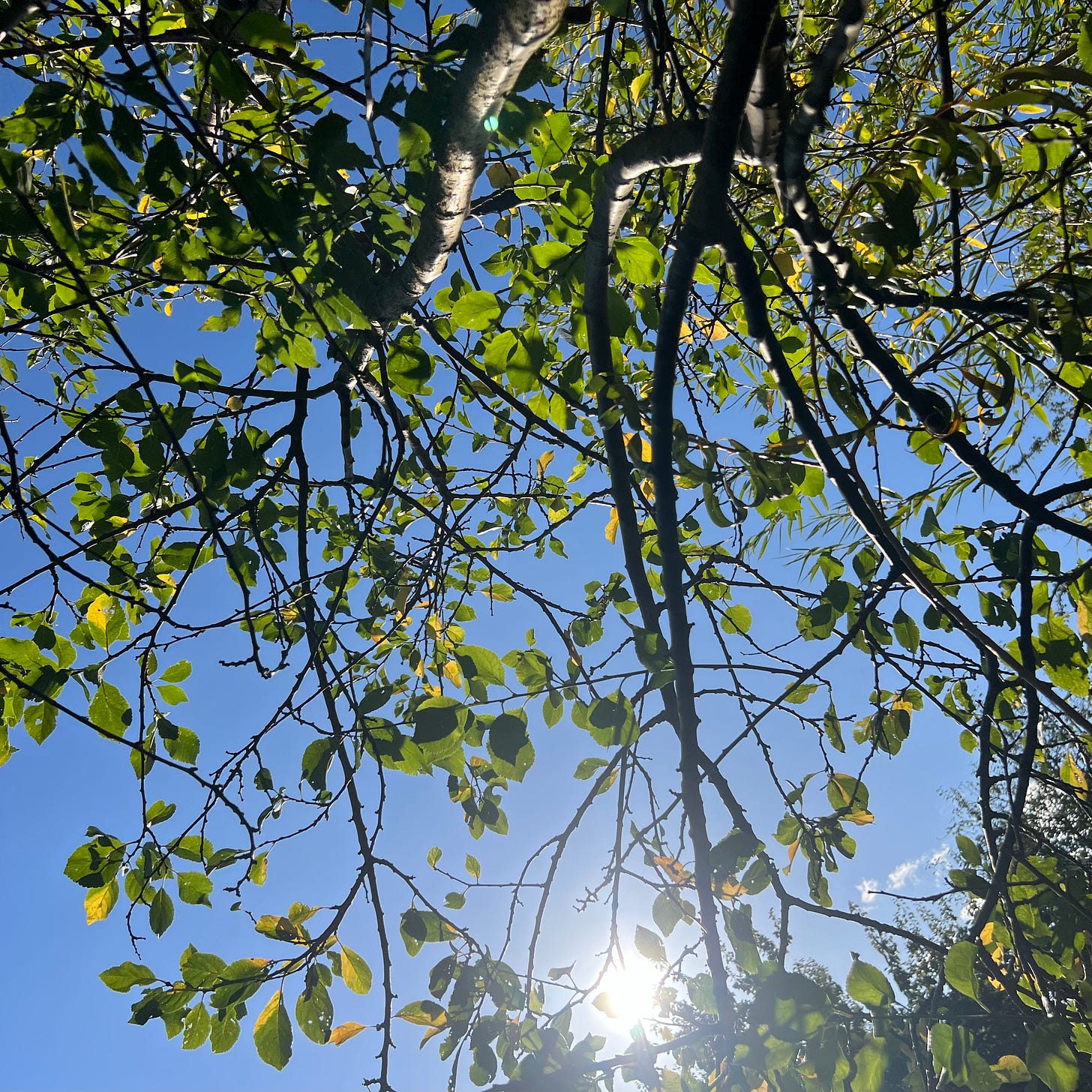
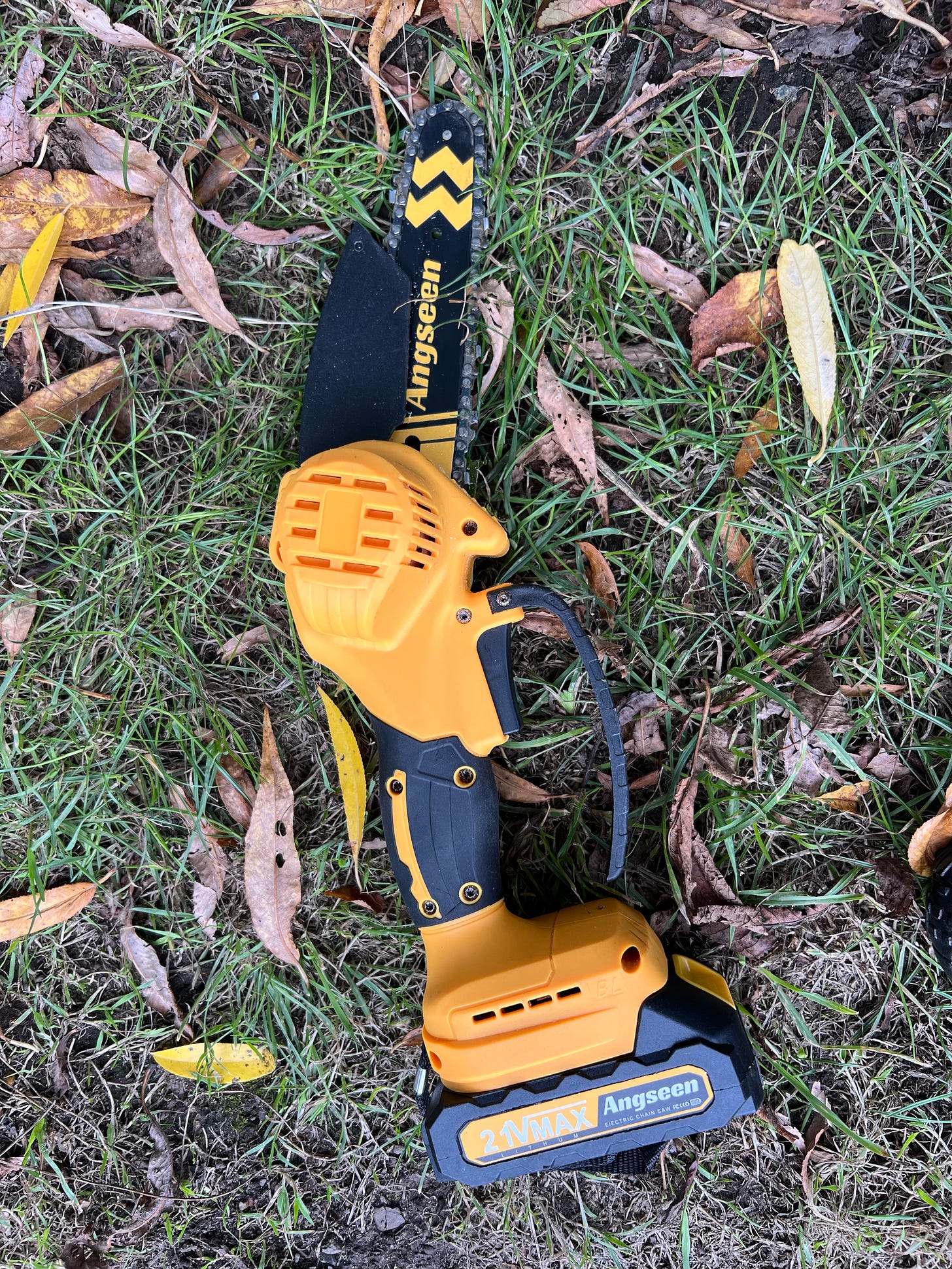
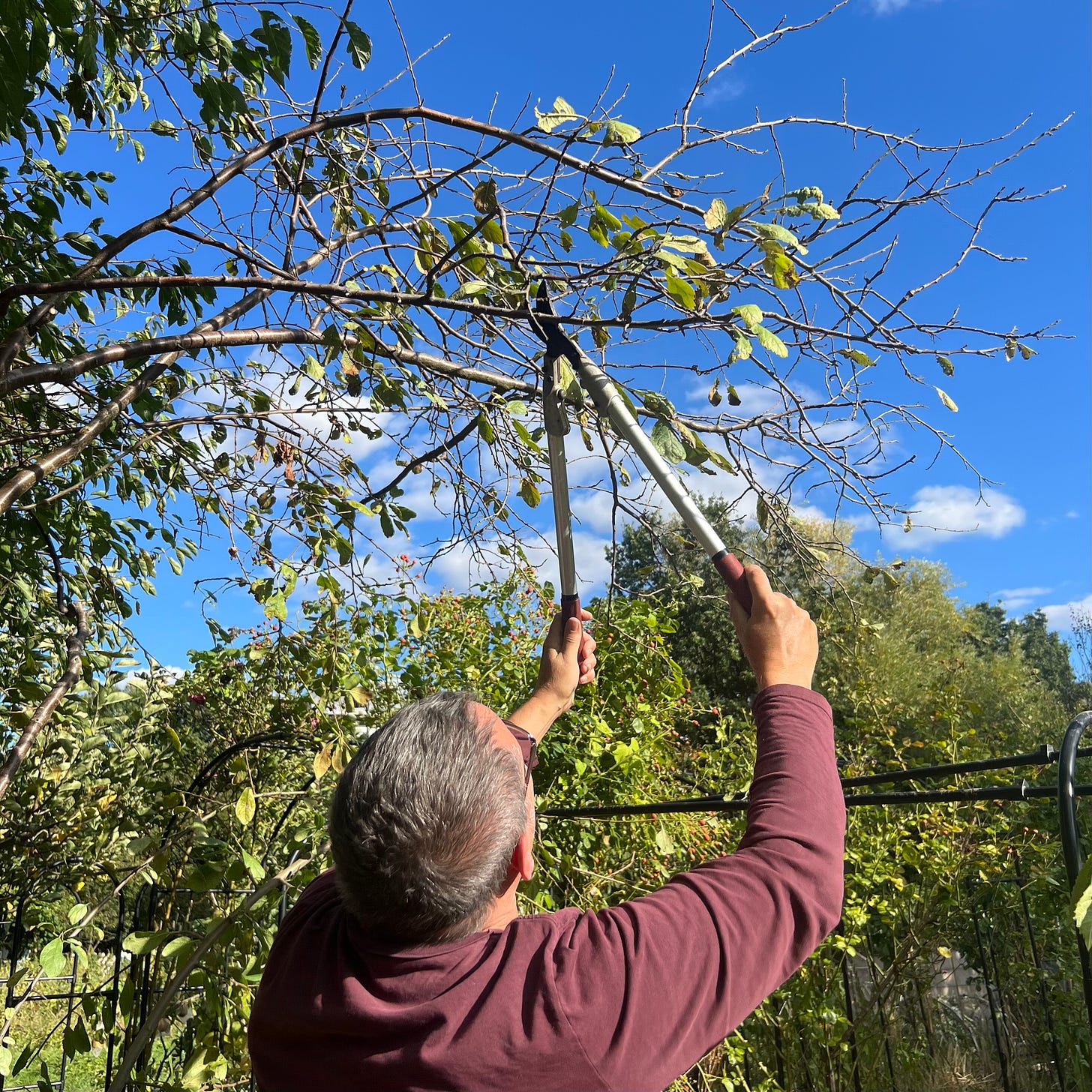
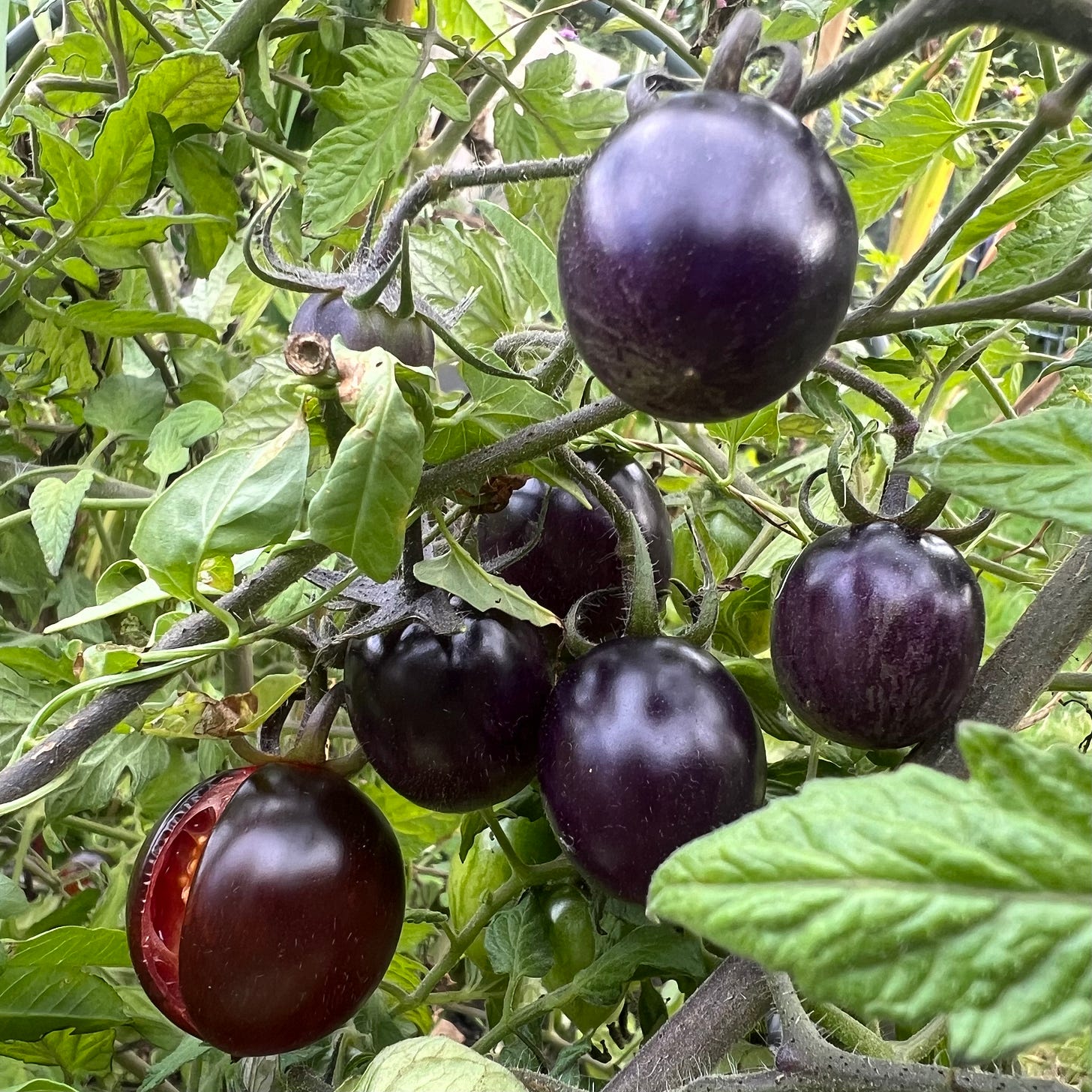
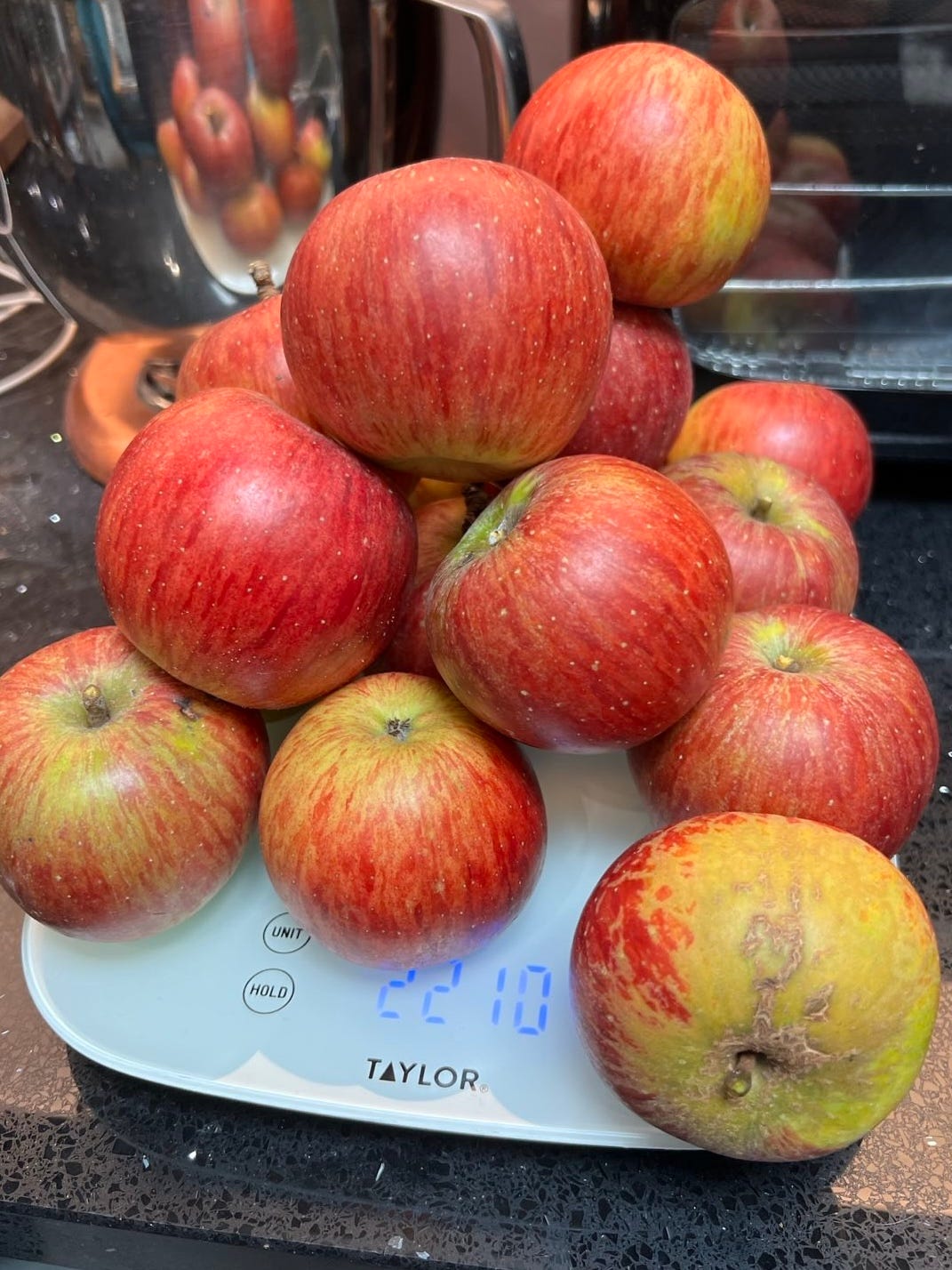
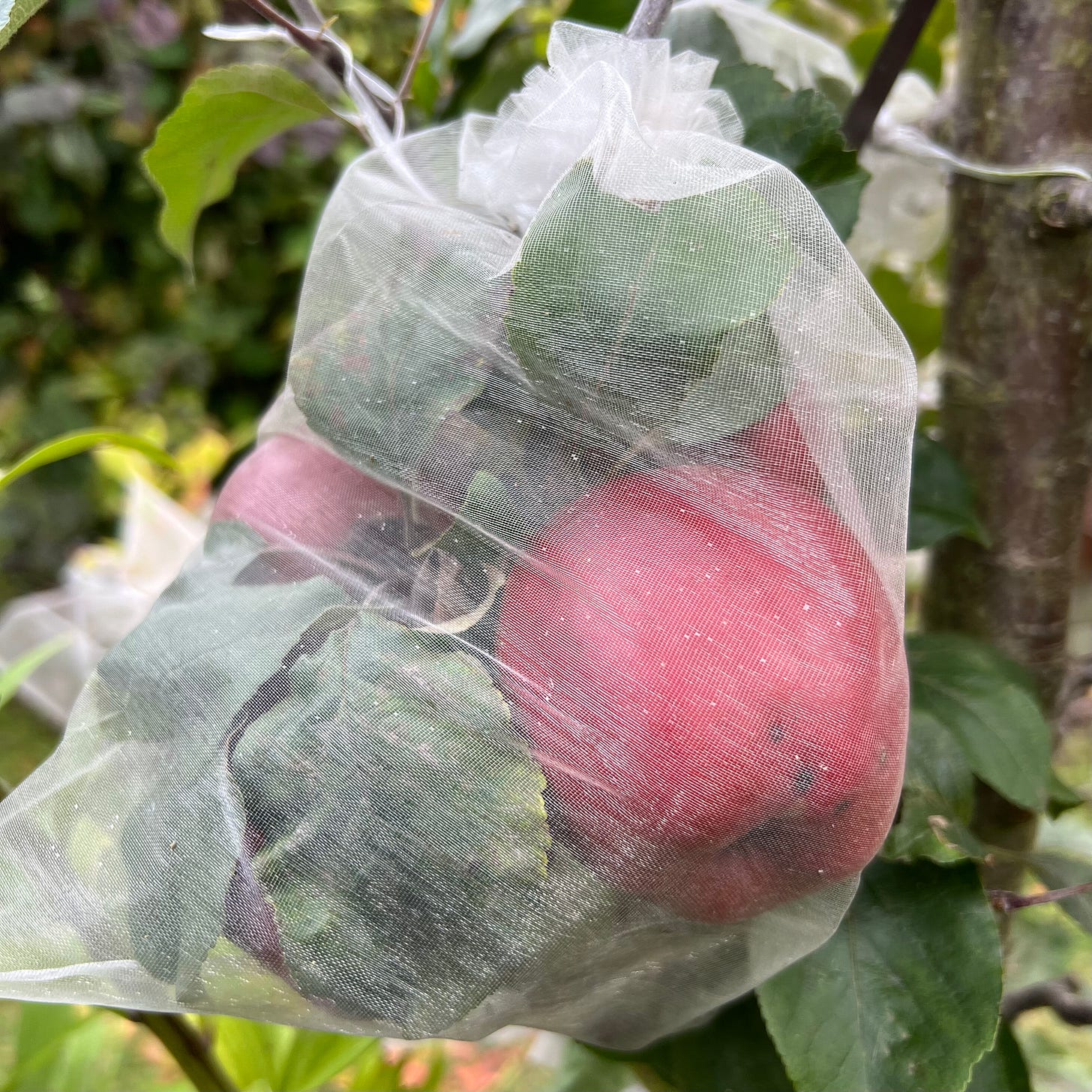
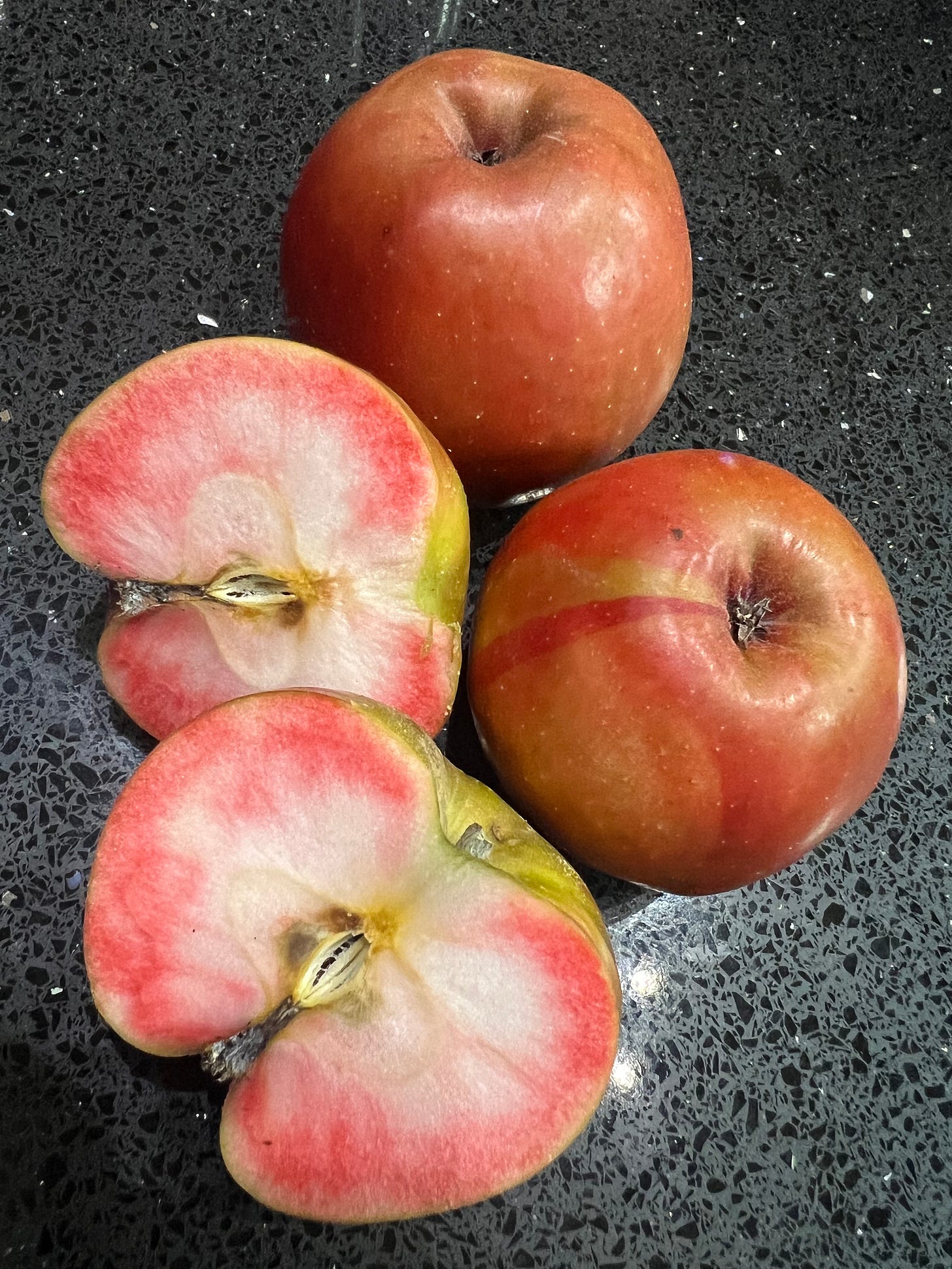


Could you share your apple chundo recipe? I would be so grateful (oooh.. that wasn’t meant as a pun, but it’s pretty good isn’t it! Since the ingredients are grated) I am always looking for interesting things to do with apples. I live in Washington State and we have ma lot of apples.
I’m afraid that I have tried and failed to understand fruit-tree pruning over the years. I have successfully killed two pear trees and managed to stop a perfectly healthy apple tree from fruiting at all. Thank you for your prose but the picture of the fox is enough to make me very happy ✨🫶🏻✨